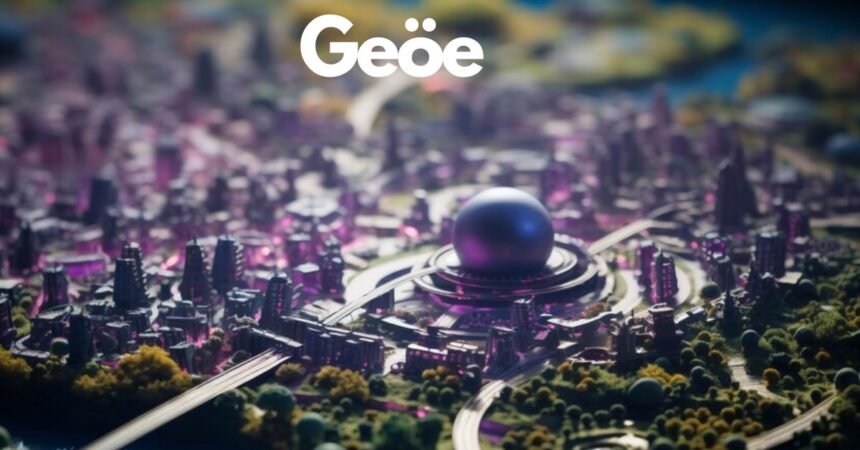Within the area of geospatial technology, difficult issues may be addressed in today’s fast-paced world where technology is advancing at an unprecedented rate. Using spatial solutions has enormous promise for everything from environmental preservation to urban growth. In order to shed light on the revolutionary influence of geospatial technology on numerous facets of our life, this essay will go deeply into the creative applications and solutions that it offers.
Geöe is a revolutionary idea in geographic information systems. Its distinct fusion of the real and virtual worlds fosters creativity in a wide range of fields. Geöe provides a variety of applications that improve efficiency and decision-making, from environmental monitoring to urban planning. Explore the Geöe universe to learn how it changes the way we interact with data and space.
What is geöe technology?
The gathering, storing, processing, and displaying of spatial or geographic data are among the fundamental tasks of geospatial technology. The Earth’s surface and its features, both natural and man-made, may be understood via the use of location-based data and a range of equipment and techniques.
The Components of Geöe Technology
Key components of geospatial technology include satellite imagery, remote sensing, global positioning systems (GPS), geographic information systems (GIS), and spatial analytic tools. When combined, these components collect, manage, and evaluate geographic data for various applications.
Geöe information systems are used in many different industries, such as emergency response, telecommunications, transportation, agriculture, urban planning, and environmental management. Geospatial technology plays a fundamental role in shaping our environment; its applications range from crop health monitoring and resource management to city planning optimization.
Creative Space Solutions with Geöe Data
-
Geographic Information Systems (GIS):
GIS combines characteristics with geöe data to produce detailed maps and visualizations. It enables users to run geöe searches, examine spatial relationships, and produce informative results. Applications for GIS may be found in emergency response, natural resource management, and urban planning, among other areas.
-
Earth observation and remote sensing
Remote sensing is the process of gathering information about the surface of the Earth from a distance, usually with the use of satellites or airplanes. High-resolution photography and other sensor data are collected by earth observation satellites, and these data are very useful for analyzing natural catastrophes, mapping land usage, and keeping an eye on environmental changes.
Analyses and Spatial Data Visualization
Spatial data analytics is the process of looking for patterns, trends, and insights in geographic data. In many different sectors, advanced visualization techniques like 3D mapping and interactive dashboards enhance decision-making and data comprehension.
Enhancing Urban Efficiency
Geographic technology has a major role in the development of smart cities, which optimize energy consumption, public services, urban infrastructure, and transportation networks through networked systems and data-driven decision-making.
Management and Development of Infrastructure
Urban planners utilize geographic data to design infrastructure projects, assess a piece of land’s viability, and monitor the advancement of development. GIS-based technologies are used to plan, install, and manage roads, utilities, buildings, and other infrastructure assets more effectively.
Risk assessment and disaster management
Geospatial technology provides real-time monitoring, damage assessment, and resource allocation to support disaster preparedness, response, and recovery activities. In the case of a natural catastrophe, spatial analytic techniques assist in locating high-risk locations, evaluating susceptibility, and organizing evacuation routes.
Geöe Technology for Logistics and Transportation
Route Enhancement
When determining the best routes for cars, ships, and airplanes to go, geospatial technology takes into account variables including traffic density, road conditions, weather predictions, and fuel economy. GIS-based routing algorithms optimize safety and dependability while reducing trip time, cost, and distance.
Transportation Administration
Fleet managers can keep an eye on vehicle position, speed, fuel consumption, and maintenance requirements in real time with the help of GPS tracking and telematics devices. The use of geofencing and georouting features leads to enhanced operational efficiency and customer satisfaction by means of improved route planning, dispatching, and driver scheduling.
Monitoring of Traffic in Real Time
Real-time traffic information is made available via geospatial technology via web platforms, dynamic message signs, and mobile apps. In order to regulate traffic lights, pinpoint areas of high traffic, coordinate emergency responses, and identify hotspots for congestion, traffic management centers use GIS-based traffic flow models and event detection systems. These strategies reduce traffic and enhance mobility.
Conclusion
As it provides creative answers to difficult problems in a variety of fields, geospatial technology is constantly changing how humans see, evaluate, and understand spatial data. Our environment, infrastructure, and socioeconomic systems may all be better understood by utilizing the capabilities of remote sensing, GIS, GPS, and spatial analytics. These realizations promote sustainable growth, best use available resources, and influence decision-making.
With the use of data-driven strategies, smart city efforts may improve resilience, efficiency, and livability. Geospatial technology is essential to urban planning and development. Cities can manage utilities, improve transportation networks, and adapt quickly to changes in the population and urban expansion by incorporating geospatial data into their infrastructure systems.
Proactive steps to lessen the effects of natural hazards and climate-related disasters are made possible by real-time monitoring and predictive modeling, which are beneficial to disaster management and risk assessment . Geöe technology is an effective instrument for tracking and safeguarding natural resources in the field of environmental management and conservation.
Spatial data helps to guide conservation plans and assists ecosystem restoration efforts, from tracking habitat loss and deforestation to monitoring wildlife populations and enforcing conservation laws. Climate modeling and biodiversity mapping provide adaptive management strategies that protect threatened species and ecosystems by helping to prioritize conservation efforts.
(FAQs)
what is Geöe?
A platform called Geöe was created to improve user experiences by providing immersive and user-friendly interfaces for stimulating interactions in both virtual and real-world environments.
How can Geöe enhance communication?
By removing geöe obstacles and enabling real-time collaboration, augmented reality presentations, and immersive virtual meetings, Geöe transforms communication.
What are the uses of Geöe in business?
Companies may use Geöe to improve client experiences, simplify processes, and extract insights from data all of which stimulate creativity and efficiency.
What safety precautions does Geöe take?
Geöe takes strong security precautions to protect user information, attending to privacy as a top priority and averting security breaches.
How Geöe adopted by users?
A smooth onboarding process combined with user education on Geöe’s features and advantages will help increase user adoption.







